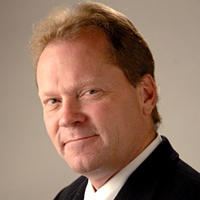While the opponents of high-speed rail are still howling loudly about the Obama administration's plans to build the projects in select regions, including Wisconsin, supporters are wasting no time in launching an effort to land another round of federal funding for more trains.
The coalition that prodded Congress to approve $2.5 billion for high-speed rail in America earlier this year is upping its ante by seeking $4 billion in additional expenditures for "bullet" trains and another $2.6 billion for Amtrak in 2011.
A diverse force of advocacy groups recently locked arms at the Union Station in Washington, D.C., where they called for the increased expenditures for high-speed rail, as well as a dedicated long-term source of funding for the infrastructure projects.
The group, Transportation for America, has several national environmental, energy, business, commercial real estate and labor partners, including the AARP, the National Association of Realtors (NAR), the American Institute of Architects, Building Owners and Managers Association (BOMA) International, the National Wildlife Federation and the U.S. Public Interest Research Group (PIRG).
In Wisconsin, the group's partners include WisPIRG, 1,000 Friends of Wisconsin, Dane Alliance for Rational Transportation, Madison Area Bus Advocates and the Milwaukee County Transit System.
The advocates formed a Web site, fourbillion.com, to help citizens express their support for high-speed rail to members of Congress.
"The benefits that will flow to our society far outweigh the proposed investment," said Eric Peterson, president of the American High Speed Rail Alliance. "An aggressive investment in high-speed rail will create tens of thousands of new jobs, incredible reductions in green house gas emissions, huge savings in energy costs, and overall lower transportation costs for users of a high-speed rail system that is highly integrated with other transportation services."
The initial round of federal stimulus funds included $810 million to provide high-speed rail to connect Milwaukee to Madison. Advocates are hopeful the second round will extend the line from Madison to the Twin Cities.
That extension has the support of the St. Paul Area Chamber of Commerce, which helped launch a new Midwest high-speed rail advocacy Web site, onboardmidwest.org.
In Wisconsin, the question remains: Would the extended high-speed rail line to the Twin Cities go through La Crosse or Eau Claire?
The La Crosse Area Chamber of Commerce recently surveyed its members about high-speed rail. Dave Clements, executive director of the La Crosse Area Convention & Visitors Bureau (LACVB) and member of the Empire Builder Coalition said, "The survey confirms two things, that more frequent train service now under the current 79 mph arrangement and higher speed train service coming in a few years would receive strong support from the La Crosse area business community. The respondents even indicated a willingness to pay more than the current fares, which should mean something to Amtrak."
On the southern end of the grid, The Midwest High Speed Rail Association is calling for federal funds to create a "bullet" train that would travel 220 mph from Chicago to St. Louis, Mo., covering the 317 miles in less than two hours. Wisconsin passengers could connect through Chicago.
The proposed second round of high-speed funding will no doubt create a second round of howling. Milwaukee's talk radio boys: You have your cue.
Steve Jagler is executive editor of BizTimes in Milwaukee and is past president of the Milwaukee Press Club. BizTimes provides news and operational insight for the owners and managers of privately held companies throughout southeastern Wisconsin.
Steve has won several journalism awards as a reporter, a columnist and an editor. He is a graduate of the University of Wisconsin-Milwaukee.
When he is not pursuing the news, Steve enjoys spending time with his wife, Kristi, and their two sons, Justin and James. Steve can be reached at steve.jagler@biztimes.com.




